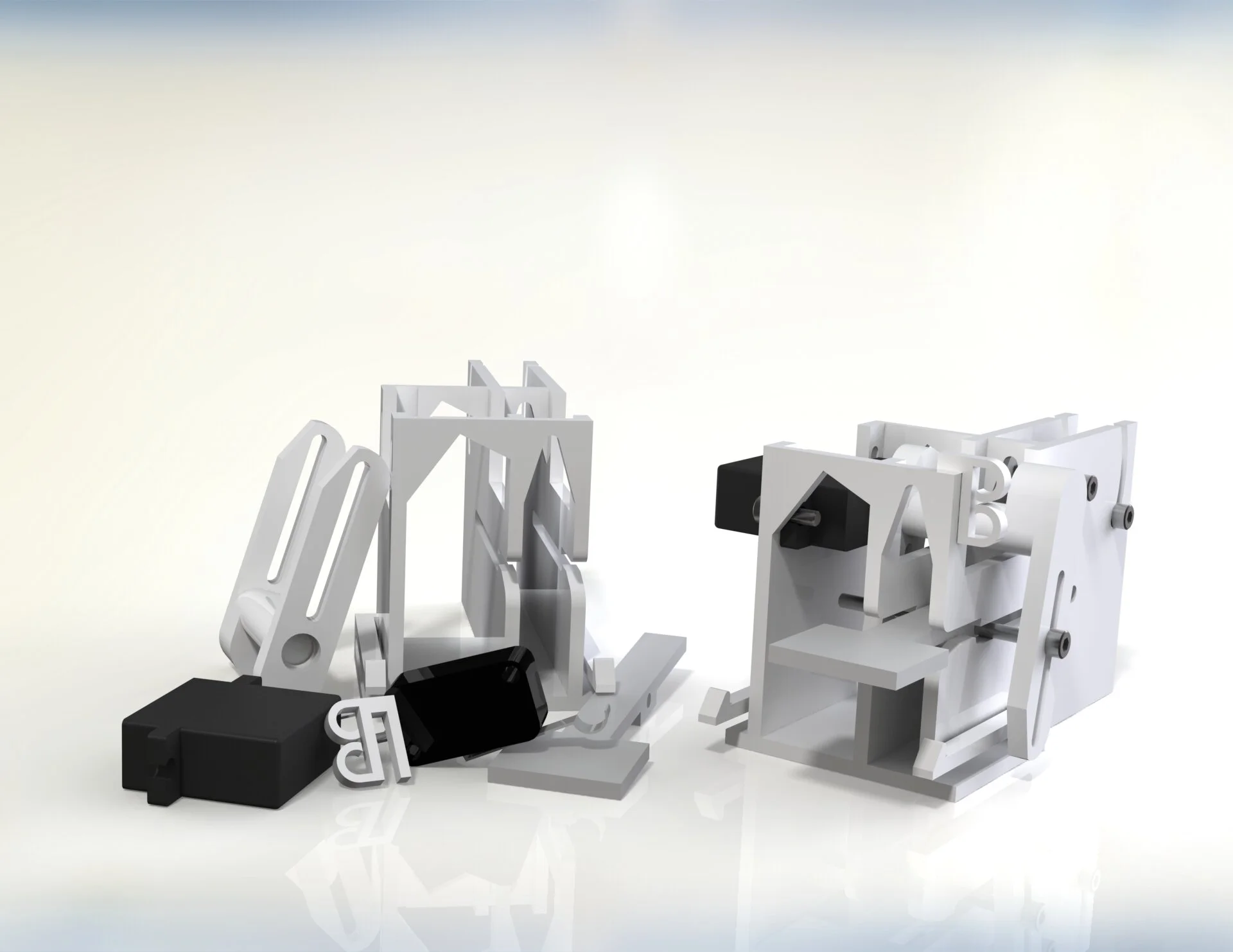Home Cage
The home cage system is used for long term testing of a partner pair, providing a large nest chamber, like the animals are raised in, and two separate chambers for food and water. Whenever the animals are in different chambers, the door between them closes until a lever is pressed to reopen it. Both animals are implanted with RFID microchips so their positions can be tracked by the RF readers on either side of each door. The control for this system was prototyped with Arduino but then evolved to use Raspberry Pi.
Retractable levers
The levers in this system are used to open the doors when the animals become separated. They are extruded into the system when active and retracted when inactive. These are comprised of a micro-servo motor, switch, machined aluminum, and 3D printed ABS.
Automatic Doors
These doors are automatically actuated by a servo motor and a rack and pinion gear set when a vole presses a lever. One door closes whenever the animals are in different chambers and contain embedded IR sensors to ensure the safety of the animals when closing. The doors are made with laser-cut acrylic, continuous servo motors, and a rack and pinion gear set.
RFid Readers
RFID readers are used to identify the animals and their positions in the system. Two readers are used at each door in order to determine both position and which direction the vole is moving. These were previously made with hand-wound antennas but now use readers with embedded antennas. They are mounted with 3D printed ABS and placed so that they do not cause interference between one another.



